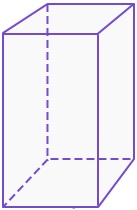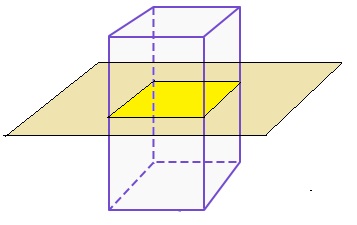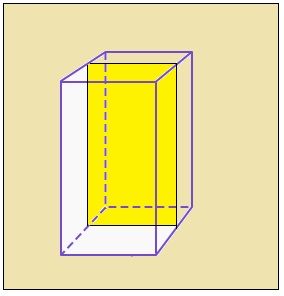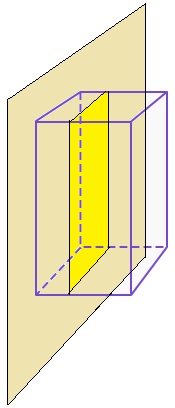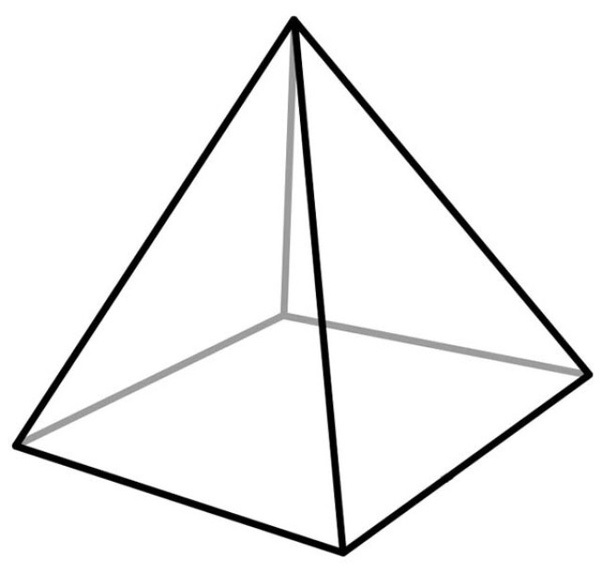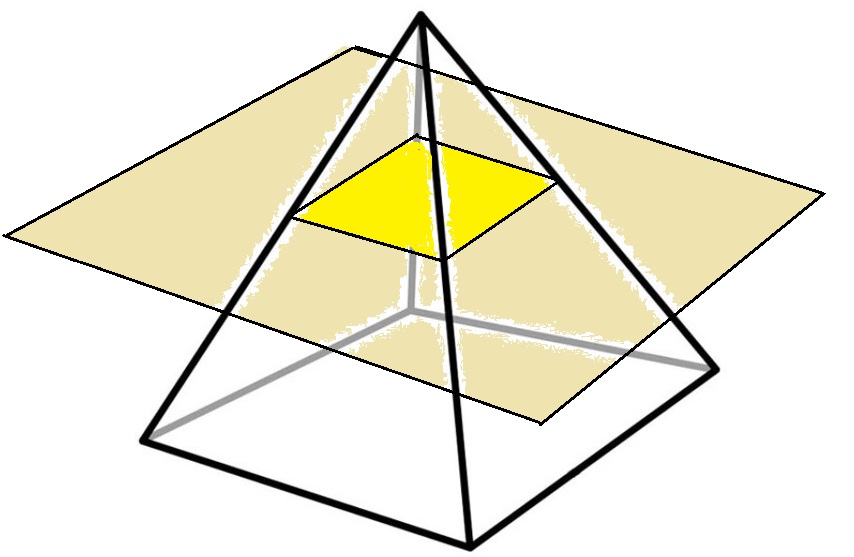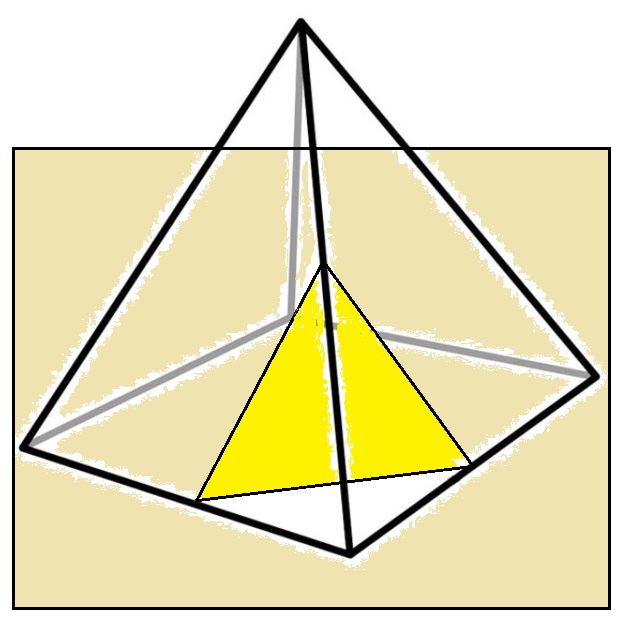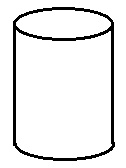 Learning Target: I can determine the 2-D shape that results when a 3-D solid is intersected with a plane.
Learning Target: I can determine the 2-D shape that results when a 3-D solid is intersected with a plane.
Cross-Sections
The most common use of geometry is for building three-dimensional structures. However, when you're planning large structures like a building or tower, you have to make detailed plans, either on paper or a screen. This presents a challenge because paper and screens can only give a flat image. You need to figure out how the structure would look from several different points of view, so you can mentally put the images together and visualize the structure in your mind.
To get a 2-dimensional image from a 3-dimensional structure, you need to find a cross-section. To find a cross-section, imagine cutting through the structure with a plane, then looking right at the spot where the plane cut the structure and seeing what the shape looks like.
If you cut a rectangular prism with a plane, whether you do it horizontally, vertically lengthwise, or vertically widthwise, the cross-section will look like a rectangle.
What if you cut a square pyramid with a plane?
If you cut horizontally, you'll have a square. However, if you cut vertically, you'll have a triangle.
Let's Practice Together
Imagine cutting this cylinder with a plane.
1. What shape would result if you cut it horizontally?
2. What shape would result if you cut it vertically?
Your Turn
3. Is it possible to cut a rectangular prism with a plane and produce a triangle?
4. Is it possible to cut a sphere with a plane and produce a square?
Check for Understanding
1. If you slice a cone with a plane that's parallel to its base, what shape will result?
2. What if you tilted the plane slightly before slicing the cone? What shape will result?
Answers
1. circle
2. rectangle
3. Yes; cut it diagonally near one of the vertices
4. No; you can only produce a circle
Check for Understanding
1. circle
2. oval (technically, an ellipse)
 Learning Target: I can determine the 2-D shape that results when a 3-D solid is intersected with a plane.
Learning Target: I can determine the 2-D shape that results when a 3-D solid is intersected with a plane. Learning Target: I can determine the 2-D shape that results when a 3-D solid is intersected with a plane.
Learning Target: I can determine the 2-D shape that results when a 3-D solid is intersected with a plane.